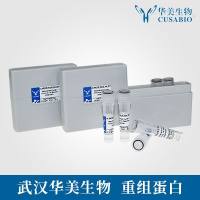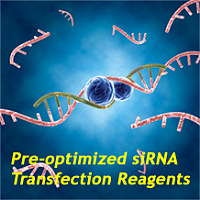Calcium Phosphate Transfection of Neurons in Primary Culture
互联网
<center> <h1> Calcium Phosphate Transfection of Neurons in Primary Culture</h1> </center>
Developed by Hank Dudek and Zhengui Xia (11/96)
Modified by Steve Finkbeiner (rev. 7/97)
Departments of Neurology and Physiology, UCSF/GIND
415-695-3868; sfinkbeiner@gladstone.ucsf.edu
-
Protocol
-
make calcium phosphate/DNA precipitate:
-
variables
-
volume of ppt 24 well: 20-40ul
60mm plate: 120-200ul -
amount of DNA : 24 well: 2-4ug (eg., for immunostaining)
60mm: 2-5ug (eg., for RNAase protection)
-
volume of ppt 24 well: 20-40ul
-
recipe: eg., for 300ul precipitate (scale up or down accordingly):
-
in a 15ml polystyrene pop-cap tube, mix DNA and CaCl2 (1/2 final volume, therefore 150ul in this case) 15ul 2.5M CaCl2 (1/10 of DNA/CaCl2 volume)
DNA (eg., 30ug = enough for 10 wells at 30ul ppt per well)
sterile H2O to 150ul - aliquot 2X Hepes-Buffered Saline (HeBS) to second tube (150ul, in this case)
- add DNA/CaCl2 to 2X HeBS dropwise with pipetman, while swirling 2X HeBS
- let ppt form in dark, 25', room temp
-
note: typical plan:
[make extra volume]# wells: 10 total vol ppt: 300ul DNA/CaCl2 vol: 150ul 2.5 M CaCl2: 15ul plasmid DNA: X ul (=30ug) sterile dH2O: X ul (to 150ul)[add to tube first] 2X HeBS: 150ul
-
in a 15ml polystyrene pop-cap tube, mix DNA and CaCl2 (1/2 final volume, therefore 150ul in this case) 15ul 2.5M CaCl2 (1/10 of DNA/CaCl2 volume)
-
variables
-
replace culture media with transfection media (37°C) (near end of 25' ppt formation time)
- remove conditioned culture media; save, to return to plates after transfection
- wash cells 3X with transfection media (serumfree, add, aspirate), then add fresh transfection media (don't let cells dry out)
-
volume of transfection media:
- well of 24-well plate: 500ul
- 35mm plate: 1.5 ml
- 60mm plate: 3 ml
-
Add ppt to plates
- drip evenly over surface, with pipetman
- leave ppt on cells 15 -75 min (time varies; see notes)
- leave in air (hood) if transfection media is MEM, in incubator if DMEM
-
Stop transfection
-
aspirate media, wash twice with fresh transfection media(37°C)
- volumes: 24 well: 500ul; 35mm: 1ml; 60mm: 2ml
-
add back conditioned media
- optional: containing 100uM APV [NMDA receptor antagonist]
- 24 well: 300ul; 35mm: 1.5ml; 60mm: 2ml
- from start of procedure, or other appropriate conditioned media
- if necessary, bring conditioned media to sufficient volume with culture media
-
aspirate media, wash twice with fresh transfection media(37°C)
-
make calcium phosphate/DNA precipitate:
-
Reagents/solutions
-
transfection media: either (see notes):
-
MEM
-
Gibco/BRL# 12370-037 with Hanks' salts with 25mM Hepes
without L-glutamine - bring to pH 7.85 with NaOH; sterile filter
-
Gibco/BRL# 12370-037 with Hanks' salts with 25mM Hepes
-
DMEM
- Gibco/BRL #11960-028
- note: for (i) or (ii): no added serum, Penn-Strep, or glutamine
-
optional (see notes): include Kynurenate-Mg: 10 volumes transfection media plus 1 vol. 10X Ky-Mg 10 X Ky/Mg stock (10 mM Kynurenic acid/100 mM MgCl2)
dH2O 170 ml Kynurenic acid 378 mg 0.5 % Phenol Red 1 ml 1 N NaOH 1.8 ml 1 M Hepes (Sigma) 1 ml 1 M MgCl2 20 ml - stir to dissolve, gradually adjusting pH to 7.4 (by eye) with 1 N NaOH
- add dH2O to 200 ml total
- Filter sterilize (in hood)
- aliquot to 30 ml; store @ -20 šC
- as thaw aliquots, store at 4 C, up to 1 mo.
-
MEM
-
transfection media: either (see notes):
-
2X HeBs
final conc 200 ml supplier NaCl 274 mM 3.2 g Baker # 3624-05; Mallinckrodt KCl 10 mM 142 mg Mallinckrodt # 6858 Na2HPO4.7H2O 1.4 mM 76 mg Mallinckrodt # 7914; 268g/mol dextrose (D-glucose) 15 mM 540 mg Baker # 1916-01; 180g/mol Hepes (free acid) 42 mM 2 g Calbiochem # 391338; 238g/mol - add components to 180 ml. water
- pH with 5 or10N NaOH, to pH 7.03
- bring to 200 ml.
- bring to pH 7.06 with 1N NaOH; remove portion, save
- bring remainder to pH 7.10; remove portion, save
- bring remainder to pH 7.14
- filter sterilize in cell culture hood
- aliquot to 1ml aliquots (eppendorf tubes)
- store at -20C; thaw individual aliquots as use
-
note, as for any CaP transfection, greatest efficiency is obtained with a fine, "sandy" ppt. This is critically dependent on the pH of the HeBS, so it is best to:
- use an accurate pH meter
- standardize the pH meter (with pH 4.0 and 7.0 standards) repeatedly, until standards are read precisely
- as indicated above, make and test multiple batches of 2X HeBS, with slightly different pH's (eg., pH 7.06, 7.10, 7.14); test each, use best
- seems to be good to make fresh 2X HeBS at least every few months
-
Amount of precipitate (ppt) per plate, length of time ppt on plates
- The most critical parameters for efficient, nontoxic calcium phosphate (CaP) transfection of primary neurons are the amount of CaP/DNA precipitate added to the cells (per volume of media), and the length of time the precipitate is left on the cells. The length of time the precipitate is left on is decided based on its efficiency of formation/accumulation; this is affected by a number of factors including the pH of the HeBS, the quality of the DNA, and the transfection media composition. The above parameters should yield a layer of precipitate, starting at 15 -30' , and becoming heavy by 30 - 60'. The neurons tolerate a heavy layer of ppt., and apparently are preferentially transfected by such a short exposure (15-60 min), compared to glia.
- With too little ppt, transfection efficiency is low; with too much, toxicity occurs (either immediate, or with one day delay); therefore, for a new neuronal cell type, media conditions, or culture age, we first do a pilot transfection, eg., with three ppt volumes, and stopping the transfection after 15, 30, and 60'. We typically transfect a lacZ expression vector, followed by immunostaining or X-gal staining (two days later) to assess transfection efficiency. We achieve approximately 1% transfection efficiency.
- During the transfection, plates are checked periodically to assess ppt accumulation and possible toxicity; the transfection is stopped early if an unusually large amount of ppt has accumulated, or if there is any toxicity.
- Usually, a layer of CaP ppt remains on plate even after washes; this disappears with time, with no apparent ill effect on cells.
-
Transfection media
- in our original protocol (ref. 1), we used DMEM as the transfection media. The problem with this media is that it is primarily bicarbonate-buffered, and so the pH can change drastically, and uncontrollably, during the manipulations of the transfection. The pH of the media in turn greatly affects the efficiency of precipitate formation (and therefore transfection efficiency and toxicity). The indicated MEM is Hanks' salts buffered, and has Hepes, and so maintains its pH in air, allowing consistency from transfection to transfection. The pH must be raised (here, to 7.85) for efficient precipitate formation. A drawback with MEM is that the ppt formation is not as efficient as with DMEM. Therefore, in some cases it may still be best to use DMEM (eg., if the pH variability can be controlled, and to achieve maximum ppt formation).
- The wash with transfection media (before placing the cells in transfection media) seems to be important for removing a residual media component that inhibits precipitate formation/accumulation. This component may be serum, and therefore the wash may be unnecessary if cells are grown in serum-free media.
-
Channel inhibitors
- for at least some neuronal types (in particular, more developed cortical neurons), the inclusion of kynurenate and APV in the protocol appears to reduce toxicity. However, these inhibitors are not essential, particularly if the cells are not very sensitive to excitotoxicity, and they can also reduce transfection efficiency. Therefore, for new cells, the transfection can be tried without the inhibitors, or with and without them side-by side. For example, we currently do not use Ky or APV for cerebellar neurons (P6-8 + 6DIV).(note, we haven't yet tried Ky in MEM)
-
Amount of DNA
- 2-4 ug/24-well, 5ug/60mm gives strong signals by Bgal staining (X-gal) and RNAase protection, respectively.
- supercoiled plasmid DNA, double CsCl-banded, is used
-
Glycerol shock
- glycerol shock seemed to only slightly increase transfection efficiency, and increased damage to cell processes (1 and 5% glycerol tried)
-
Cell culture
- this CaP protocol has been used successfully for primary cultures of rat neurons from cortex, hippocampus, striatum, spinal cord, and cerebellum
- for cortical cultures from E17/18 fetuses, or newborns, this protocol has worked well for cells on or after 3DIV (day of culture being 0 DIV); if done on 1 or 2 DIV, there can be high toxicity and low transfection efficiency
-
cell density at seeding: cortical (E17/18) cerebellar(P6-8) 24 well: 2 X 105 5 X 105 cell/well 60mm: 3 X 106 5 X 106 cells/plate - this protocol has worked for cells grown in a variety of different culture medias; however, the particular culture conditions can change the optimal day of transfection
-
amt of CaCl2 in pptn reaction
- lowering the amt of CaCl2 (to 1/2 or 1/4 the indicated amount) greatly reduced ppt formation efficiency and transfection efficiency
- Xia, Dudek, Miranti, and Greenberg, J. Neurosci. 16, 5425-5436, 1996.
- Bonni, Ginty, Dudek, and Greenberg, Molec. Cell. Neuroscience, 6, 168-183, 1995.
- Nikolic, Dudek, Kwon, Ramos, and Tsai, Genes & Dev. 10, 816-825, 1996.
- Dudek, Datta, Franke, Birnbaum, Yao, Cooper, Segal, Kaplan, and Greenberg, Science, in press.







